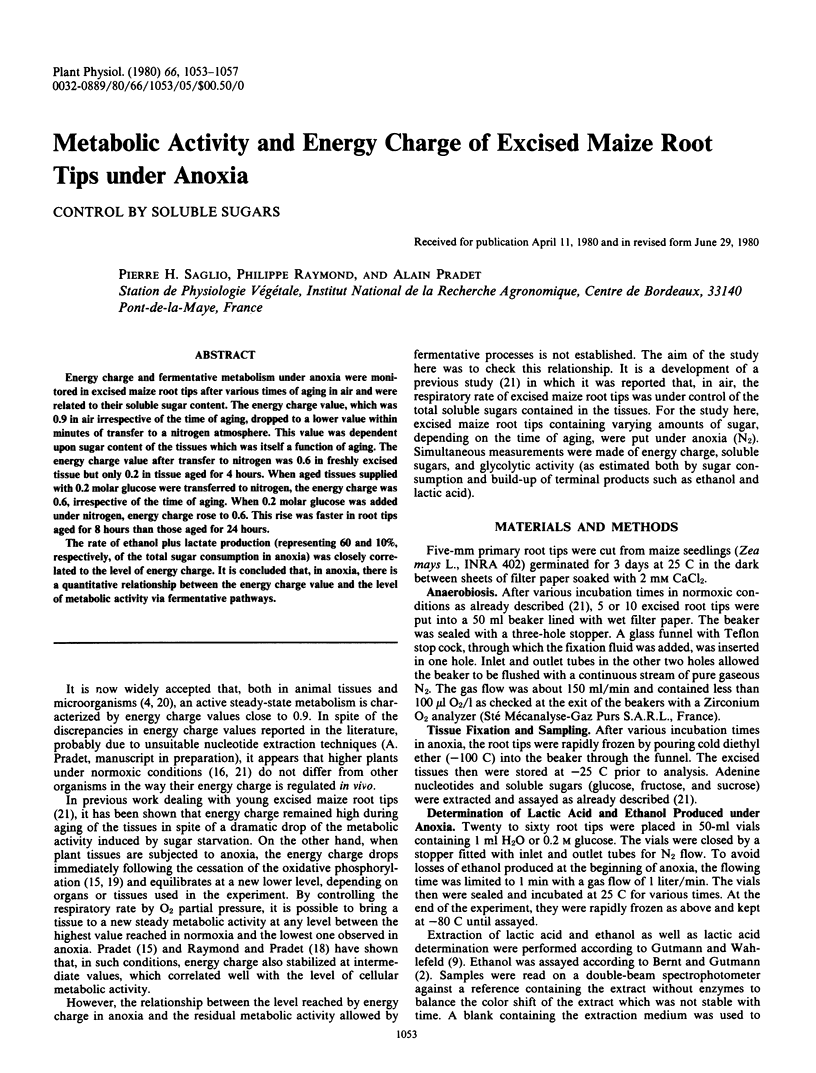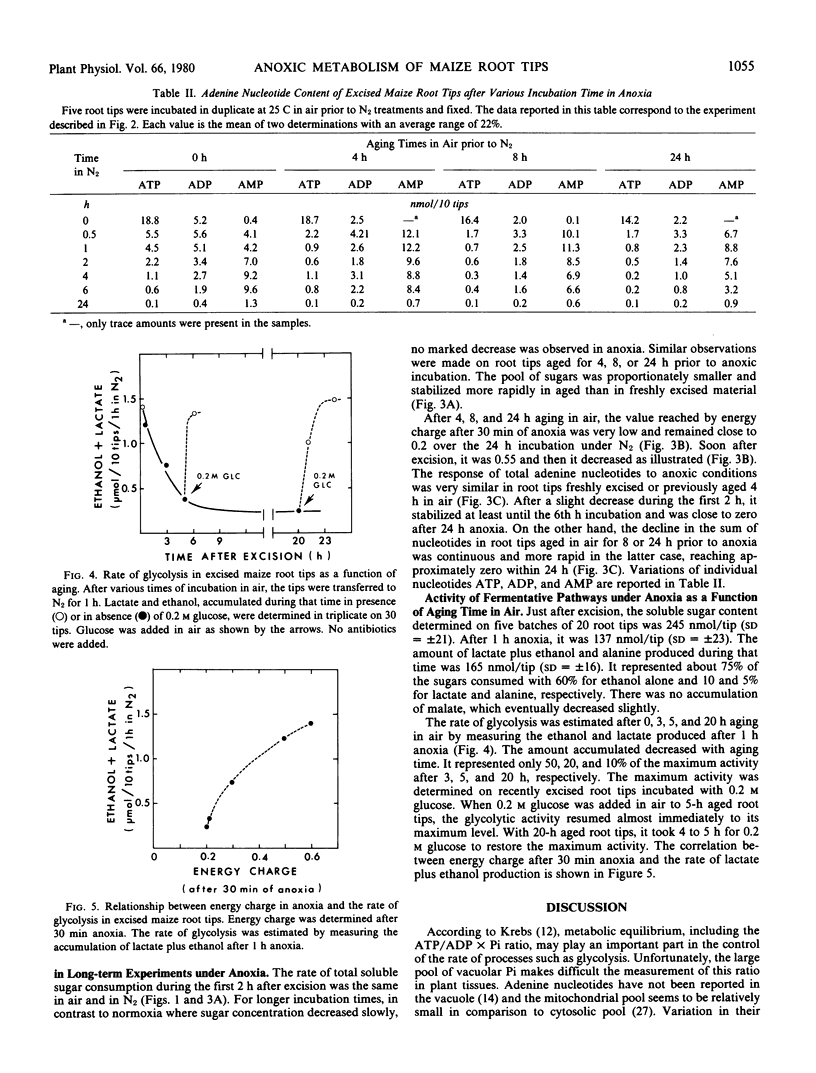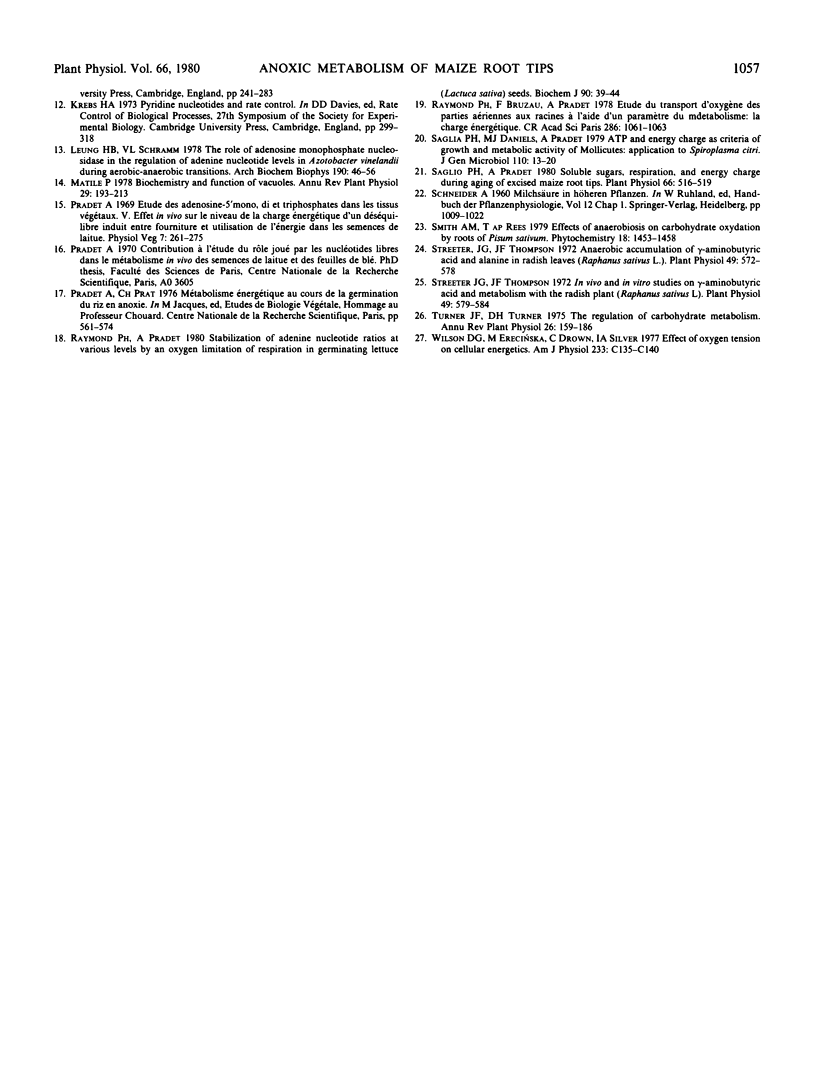Abstract
Energy charge and fermentative metabolism under anoxia were monitored in excised maize root tips after various times of aging in air and were related to their soluble sugar content. The energy charge value, which was 0.9 in air irrespective of the time of aging, dropped to a lower value within minutes of transfer to a nitrogen atmosphere. This value was dependent upon sugar content of the tissues which was itself a function of aging. The energy charge value after transfer to nitrogen was 0.6 in freshly excised tissue but only 0.2 in tissue aged for 4 hours. When aged tissues supplied with 0.2 molar glucose were transferred to nitrogen, the energy charge was 0.6, irrespective of the time of aging. When 0.2 molar glucose was added under nitrogen, energy charge rose to 0.6. This rise was faster in root tips aged for 8 hours than those aged for 24 hours.
The rate of ethanol plus lactate production (representing 60 and 10%, respectively, of the total sugar consumption in anoxia) was closely correlated to the level of energy charge. It is concluded that, in anoxia, there is a quantitative relationship between the energy charge value and the level of metabolic activity via fermentative pathways.
Full text
PDF




Selected References
These references are in PubMed. This may not be the complete list of references from this article.
- Akkerman J. W., Gorter G. Relation between energy production and adenine nucleotide metabolism in human blood platelets. Biochim Biophys Acta. 1980 Mar 7;590(1):107–116. doi: 10.1016/0005-2728(80)90150-4. [DOI] [PubMed] [Google Scholar]
- Chapman A. G., Atkinson D. E. Adenine nucleotide concentrations and turnover rates. Their correlation with biological activity in bacteria and yeast. Adv Microb Physiol. 1977;15:253–306. doi: 10.1016/s0065-2911(08)60318-5. [DOI] [PubMed] [Google Scholar]
- Leung H. B., Schramm V. L. The role of adenosine monophosphate nucleosidase in the regulation of adenine nucleotide levels in Azotobacter vinelandii during aerobic-anaerobic transitions. Arch Biochem Biophys. 1978 Sep;190(1):46–56. doi: 10.1016/0003-9861(78)90252-7. [DOI] [PubMed] [Google Scholar]
- Raymond P., Pradet A. Stabilization of adenine nucleotide ratios at various values by an oxygen limitation of respiration in germinating lettuce (Lactuca sativa) seeds. Biochem J. 1980 Jul 15;190(1):39–44. doi: 10.1042/bj1900039. [DOI] [PMC free article] [PubMed] [Google Scholar]
- Saglio P. H., Pradet A. Soluble Sugars, Respiration, and Energy Charge during Aging of Excised Maize Root Tips. Plant Physiol. 1980 Sep;66(3):516–519. doi: 10.1104/pp.66.3.516. [DOI] [PMC free article] [PubMed] [Google Scholar]
- Streeter J. G., Thompson J. F. Anaerobic Accumulation of gamma-Aminobutyric Acid and Alanine in Radish Leaves (Raphanus sativus, L.). Plant Physiol. 1972 Apr;49(4):572–578. doi: 10.1104/pp.49.4.572. [DOI] [PMC free article] [PubMed] [Google Scholar]
- Streeter J. G., Thompson J. F. In Vivo and In Vitro Studies on gamma-Aminobutyric Acid Metabolism with the Radish Plant (Raphanus sativus, L.). Plant Physiol. 1972 Apr;49(4):579–584. doi: 10.1104/pp.49.4.579. [DOI] [PMC free article] [PubMed] [Google Scholar]


